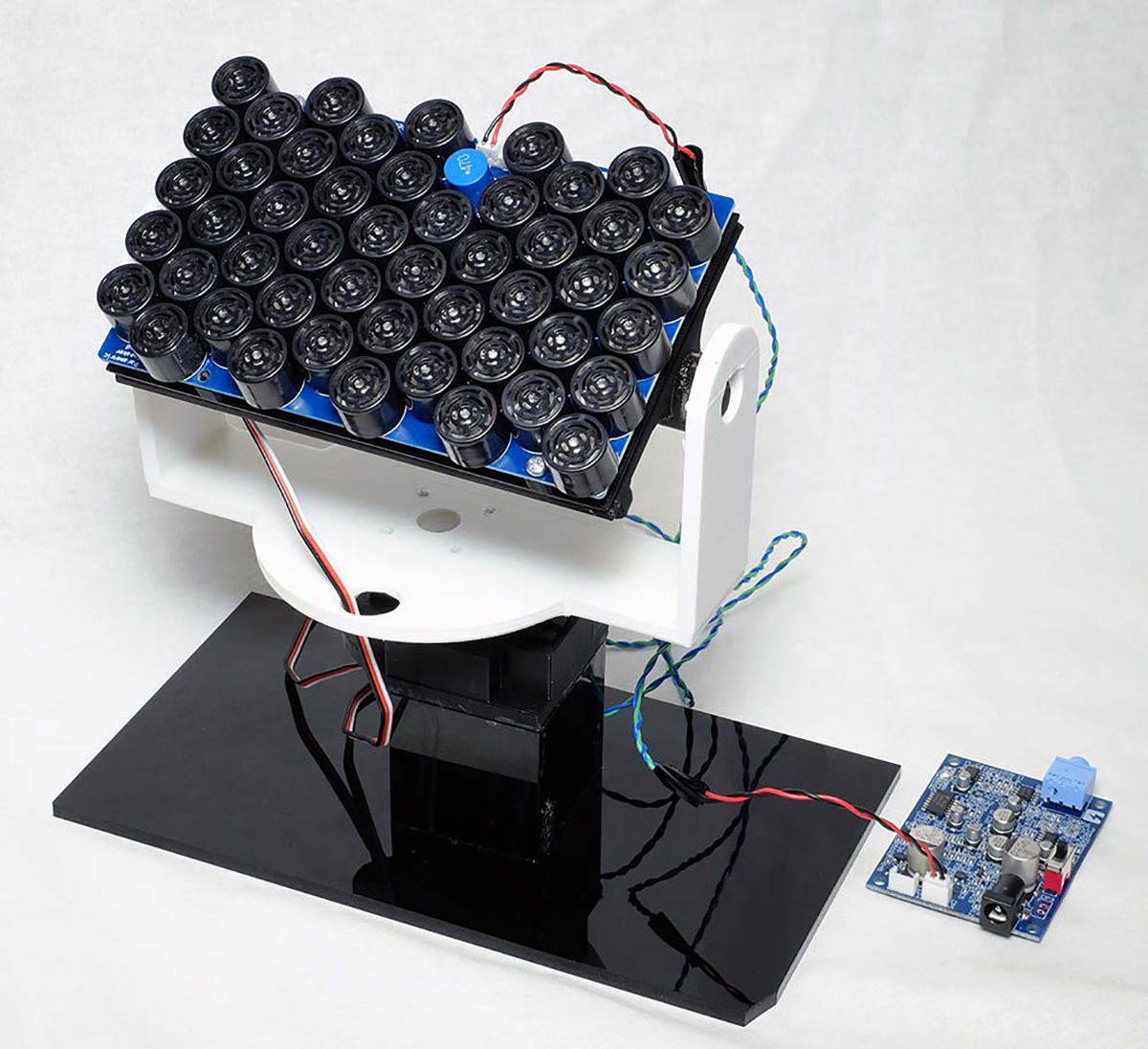
Sonoliards is a sound system, including a single superdirectional speaker, that calculates the reflection path of sound within a space and optimizes the path. Using computers to analyze the space, the extent of what can be accomplished using the speaker is greatly expanded. According to the position of the target for which the sound is intended, even when the target is hidden behind an object, the sound can be directed to be heard using reflections from the nearby walls and ceiling. Moreover, the target can be made to perceive the sound as coming from different directions by swinging the superdirectional speaker to various directions. Because the space where humans are present changes constantly, our system also must handle real-time operation. It is possible to emit a sound while tracking, even when the person is in motion, thereby imparting the perception that the sound is following the person.
< Case >
■Case 1
Although audio guidance using a superdirectional speaker has been tested for an exhibition hall, you are now in a difficult situation as actual tests revealed various problems. You are looking for solutions that can be handled suitably from the presenter side, even when the customer is standing behind an object or is in motion.
■Case 2
It is not possible to arrange many speakers and staffs because of a limited budget. You are looking for ways to create a sound environment using a small number of speakers that functions similarly to when many ones are being used.
< Theory >
■ Simulation of propagation path of sound emitted by superdirectional speakers
First, the position of the superdirectional speaker is fixed and the propagation path of the sound emitted is simulated. The entire space is then analyzed using the sound-line simulation method, considering reflections from the walls and floors. Once the sound propagation path is estimated, the trajectory for directing the sound to the target is controlled by swinging the speaker in the appropriate direction.
■ Adaptation to the motion of the target and intention of the sender using the analysis results
Because the superdirectional speaker emits sound only in a certain direction, the sound can be directed to positions obscured by obstacles by utilizing reflections, and attention can also be drawn to a specific direction in this manner. Moreover, real-time operations, such as making a specific person moving within a space hear the sound only at a specific location, can be handled by utilizing acoustic tracking and motion capture.

■ Conference presentations
UIST (2017)